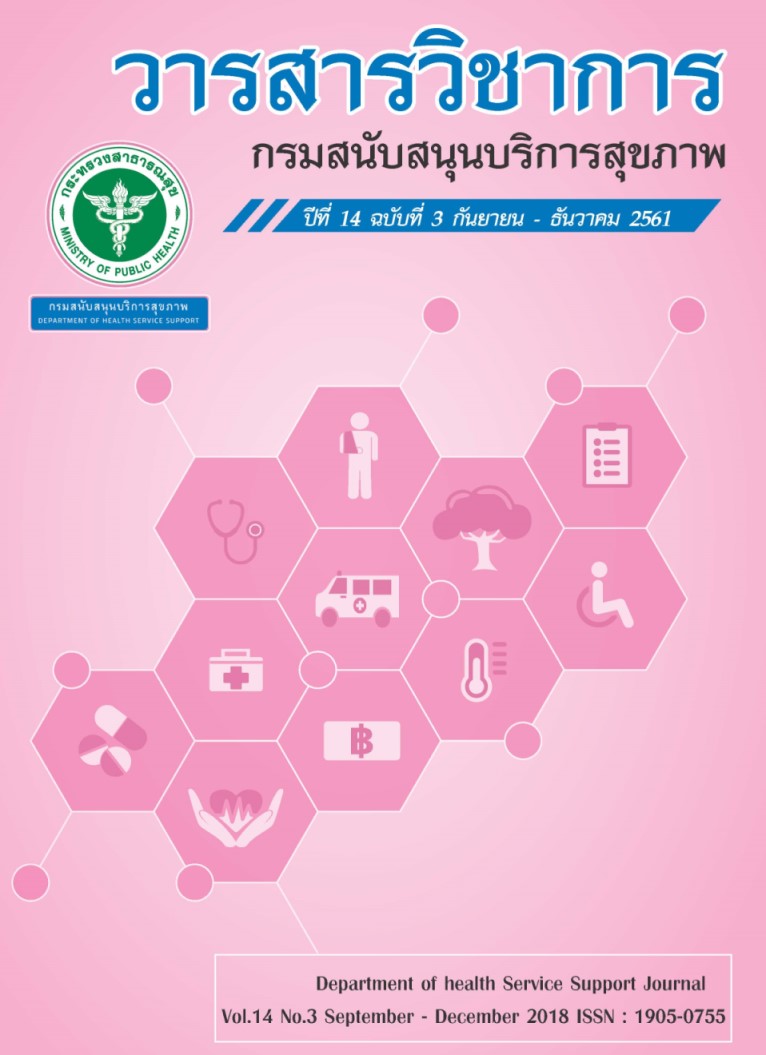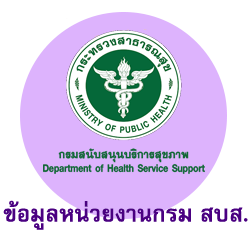DEVELOPMENT OF CARE SYSTEM FOR STROKE PATIENTS FROM HOSPITAL CONTINUING TO COMMUNITY, CHUMPHON PROVINCE
Keywords:
Care System Development, Patient Service, Stroke PatientAbstract
Stroke patients in Chumphon province will be attended by a multidisciplinary team of hospitals, but when was discharged to home with the problem that some patients had no caregiver and undergoing delayed care. This research was aimed to development of care system for stroke patients from hospital continuing to community, Chumphon province. This cross sectional descriptive research, samples were 247 personnel, 203 local networks, 94 stroke Patients and 94 caregivers. Data collected during June - July 2018, consisting of personnel questionnaire (alpha0.89), network questionnaire (alpha0.84), Barthel’s index of activities daily living (ADL) (alpha0.85), capacity of caregiver questionnaire (alpha0.91) and quality of life assessment (alpha0.94). Data were analyzed by percentages, means standard deviation and chi-square test.
The results after development the quality service of home visit was better than before the development, there were demographic data, patient problems assessment and care, referral system, report form and home visit schedule. The participation of local network was at moderate level 85.7% (mean=50.94; SD=10.45), overall ADL of patient was moderate level 51.1% (mean=48.03; SD=33.41), overall patient’s quality of life was moderate level 53.2% (mean=8.81, SD=1.50). Factors had statistically significance related to patient’s quality of life were as follows gender, residence style, ADL score of patient were as follows Feeding, Transfer, Grooming, Toilet Use, Bathing, Mobility, Stairs, Dressing, Bowels and Bladder. Overall work capacity of caregivers was high level 84.0% (mean=45.48; SD=15.88), overall quality of life of stroke patient’s caregiver was moderate level 81.9% (mean=6.63; SD=1.02), factors had statistically significance related to caregiver’s quality of life were as follows overall capacity of caregivers, type of caregivers, emergency transit management, training, income, overall quality management of patient’s service. Factors had no affecting to caregiver’s quality of life were as follows gender, age, education, work, population survey, coordinating with family care team, planning, consulting, patient’s healthcare with other organizations, patient information file and reporting. Conclusion: after development the quality of service was better than before development. The ability of patients to improve daily routine to the quality of life of the patients was significantly improved at p-value<0.05.
References
World Health Organization. (2015). The global burden of disease. [cited 2017 November 1] from: http//www.who.int
Jauch. (2013). Guidelines for the early management of patients with acute ischemic stroke: A Guidelines for healthcare professionals from the American Hart Association/ American Stroke Association. Stroke; 44: 870-947.
Daniel WW. (1995). Biostatistics: A Foundation for Analysis in the Health Sciences. 6th ed. Singapore: John Wiley & Sons.
The Neurological Society of Thailand. (2011). Clinical practice guideline for stroke rehabilitation. 2thed. Bangkok: Thanapress. (in Thai).
Mahatnirunkul, Suwat. (1997). Compare the quality of life measurement of the WHO every 100 indicators and 26 indicators. Chiang Mai: Suanprung Psychiatric Hospital. (in Thai).
Mookyae, U. (2015). The Study of Home-based Care with Thai Traditional Medicine for Paralysis Patients in Noen-porSubdistrict community, Samngam District, Phichit Province. Master Thesis in Thai Traditional Medicine, Chiang Rai Rajabhat University. North 15th Rajabhat University: 213-23. (in Thai).
Stineman MG, Xie D, Kurichi JE, Kwong PL, Vogel WB, Ripley DC. (2014). Comprehensive versus consultative rehabilitation services post acute stroke: Outcomes differ. JRRD 51(7): 1143–54.
Kamalakannan S, Venkata MG, Audrey Prost, Natarajan S, Pant H, Chitalurri N, Goenka S, Kuper H. (2016). Rehabilitation needs of stroke survivors after discharge from hospital in india. ACRM journal homepage; 97: 1526-32.
Aiadsuy, N, Wongvatunyu, S, Chaiviboontham, S. (2013). Stress and Coping among Family Caregivers of the Patients with Brain Tumor awaiting for Cranial Surgery. Rama Nurs J; 19(3): 349-364. (in Thai).
Downloads
Published
How to Cite
Issue
Section
License
Copyright (c) 2019 Journal of Department of Health Service Support-วารสารวิชาการกรมสนับสนุนบริการสุขภาพ

This work is licensed under a Creative Commons Attribution-NonCommercial-NoDerivatives 4.0 International License.



